The perfect crochet baseball pillow for your #1 team
Create a cozy pillow with this easy-to-follow crochet pattern. Perfect for baseball lovers of all ages, this crochet baseball pillow adds a sporty touch to any space!
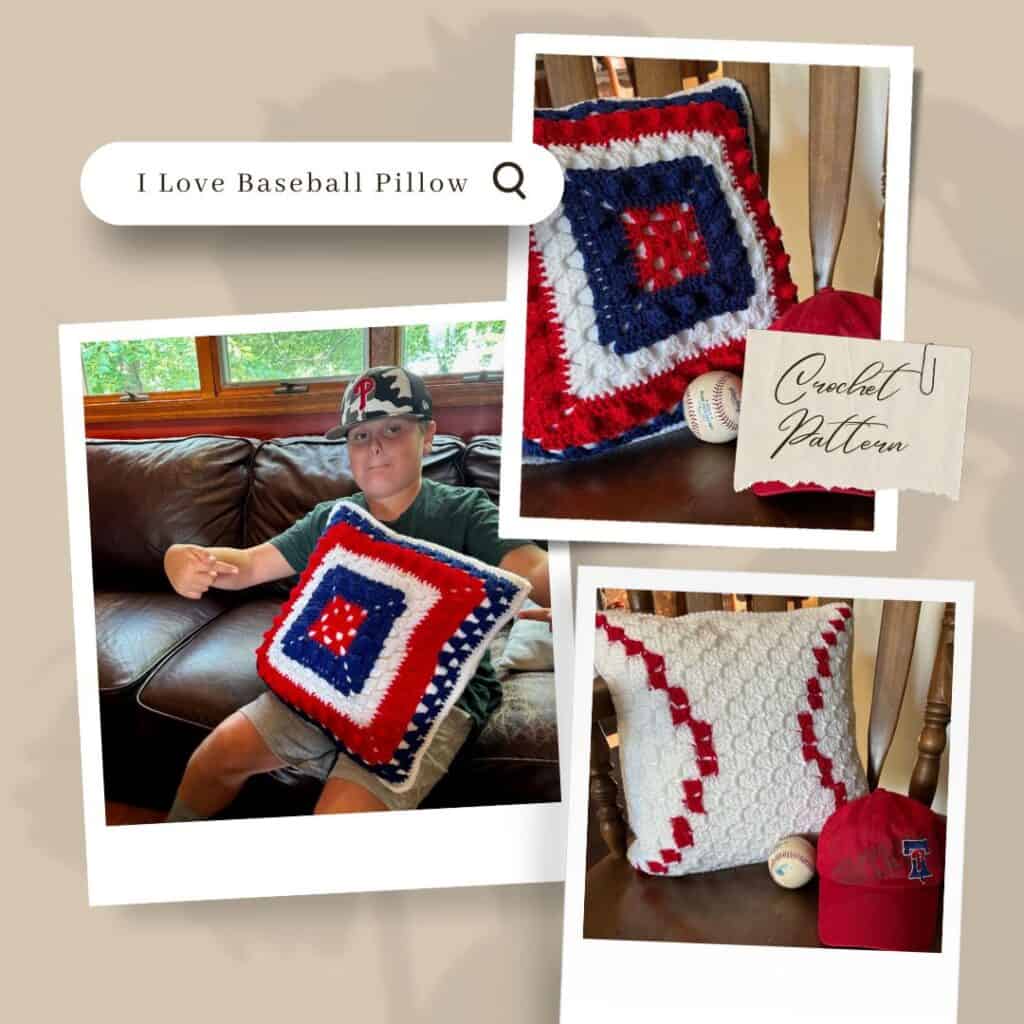
I Love Baseball Pillow
Baseball has been a part of my life ever since I met my husband back in high school. When we were dating, I would go to his games ’cause that’s what a girlfriend does, right?! And, that’s when I started watching MLB and developed a real appreciation for the sport.
When our kids were growing up, they gave baseball and softball a try. But, none of them really cared much about the sport and moved on to other things.
Fast forward to today. My younger grandson is head over heels for baseball. He plays in both the spring and fall leagues. Ask him any stat for the Phillies and he can probably drop you some numbers without looking it up. It’s a thing…
Needless to say, baseball is big in our family.
My grandson’s birthday just happens to be Granny Square Day, August 15th. So, this year I designed the I Love Baseball Pillow to add to his collection.
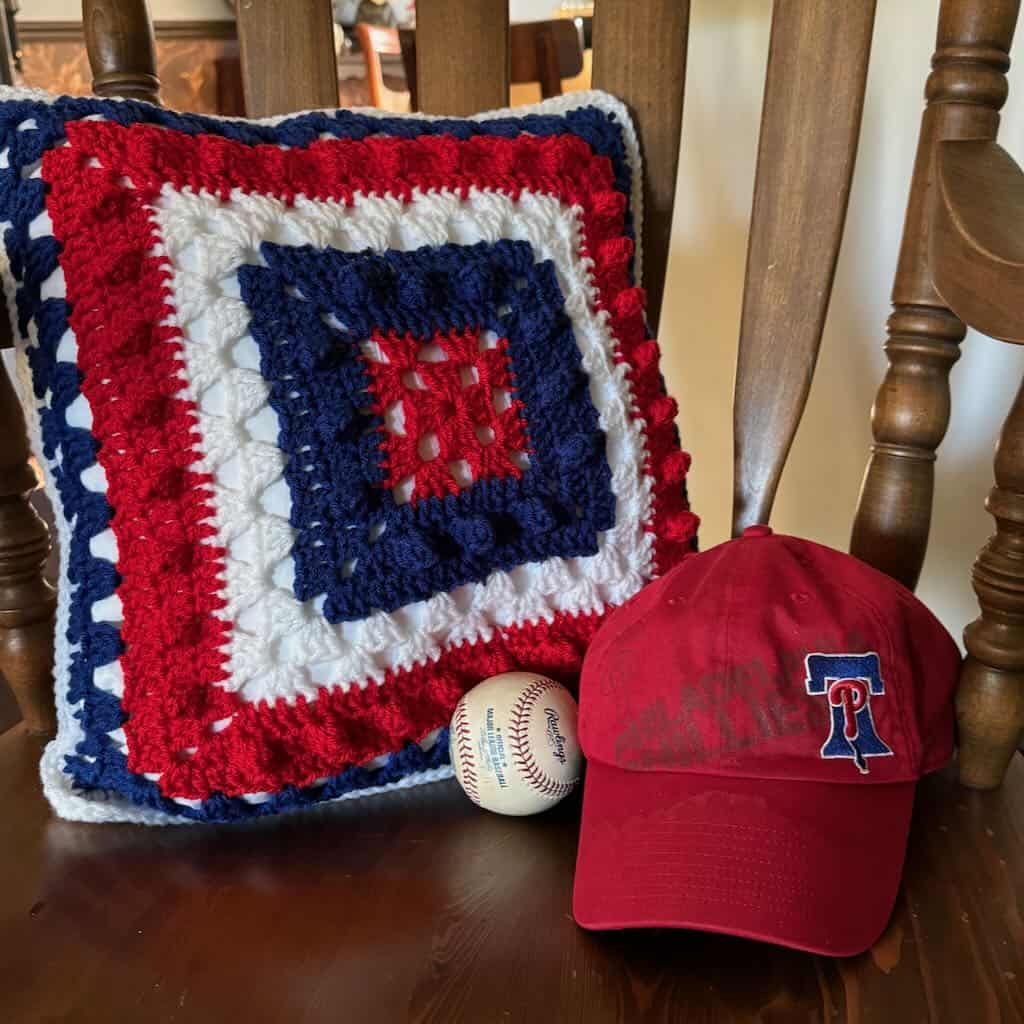
Design + Construction
I’ve combined 2 common crochet techniques in one baseball pillow – a modified granny square and corner to corner (C2C) crochet.
The granny square panel (based on my Grab the Popcorn Granny found here) represents your favorite team. That’s done by working the square in the team colors. We’re Phillies fans so I made my granny square panel in red, white and blue.
The square features alternating sections of granny stitch and solid double crochet with popcorn stitches. I thought this granny square would be a great choice since game time snacks usually include popcorn!
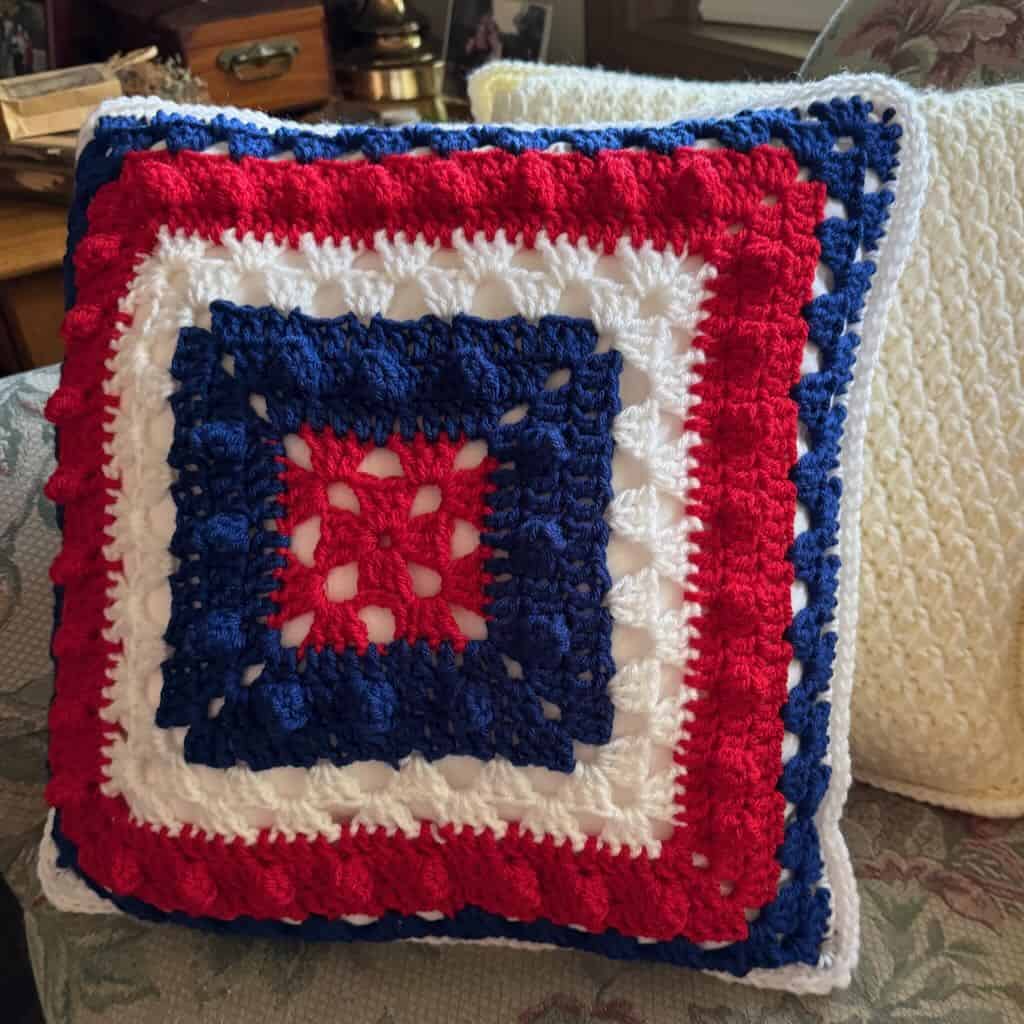
The panel on the other side of the baseball pillow is worked in C2C (corner to corner) crochet and features a baseball look-alike. All you need for this side is red and white yarn (although you could certainly crochet your baseball in a different color if you like).
If you aren’t familiar with C2C using double crochets (the standard C2C technique), this video by Naztazia is excellent.
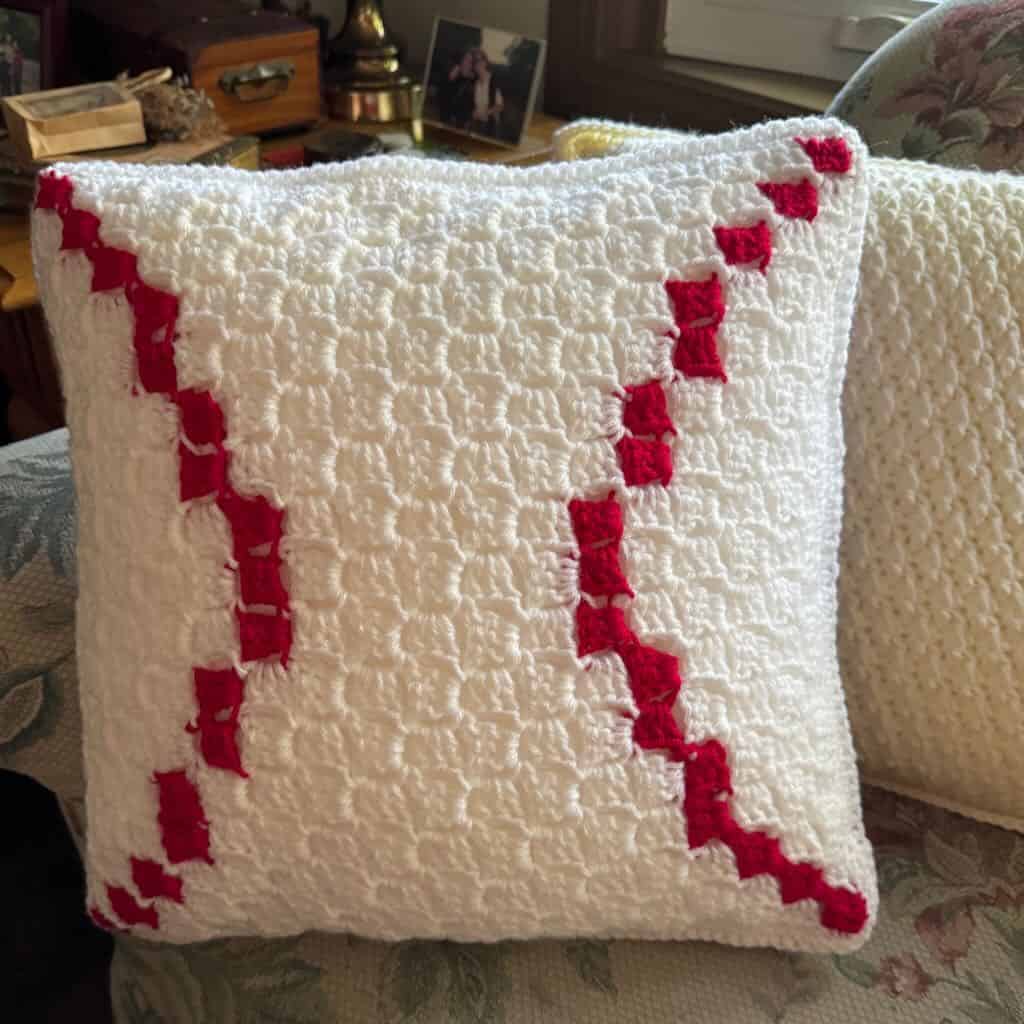
The finished panels are slightly under 16″ when they’re completed. Blocking isn’t necessary because the panels stretch around the pillow form. This ensures a great fit around the pillow form and keeps your baseball pillow looking great with continued use.
Finally, the 2 panels are joined together with single crochets around the pillow form. While I chose white for my joining color, you can choose anything that suits your personal taste to finish off your baseball pillow!
Tips for personalizing your baseball pillow
- Choose your favorite panel and work 2 identical panels.
- If you have 2 favorite teams, crochet 2 granny squares, one in each of the team’s colors.
- Put pompoms on the 4 corners so you can “cheer” on your team while they play!
I Love Football Pillow
For football fans, my I Love Football Pillow makes a wonderful companion for this baseball pillow. Click here to find out how you can crochet your own football pillow.
The Yarn
This post contains affiliate links. That means, if you purchase something using the link, I receive a small commission. You don’t pay any extra and your information is safe. Thanks for supporting my small business.
Any worsted weight acrylic yarn will work for this crochet baseball pillow. Depending upon what your team’s colors are, finding just the right colors should be more important than the actual yarn.
The pattern is adaptable enough that, as long as you are using worsted weight yarn, the baseball pillow should be the right size. Of course, you can adjust hook size if need be.
Shop your yarn collection first. Then, buy what you need, especially if you’re missing a color.
Because the Phillies’ team colors are red, white and blue, it wasn’t difficult to find enough in my yarn stash to make the baseball pillow with yarn left over. Your team may have a color that’s a little harder to match. Get as close as you can.
Here are some of my favorite yarns for this baseball pillow:
- Lion Brand has several choices – “Vanna’s Choice”, “Basic Stitch”, “Color Theory”
- Knit Picks “Brava Worsted”
- Paintbox Yarns “Simply Aran”
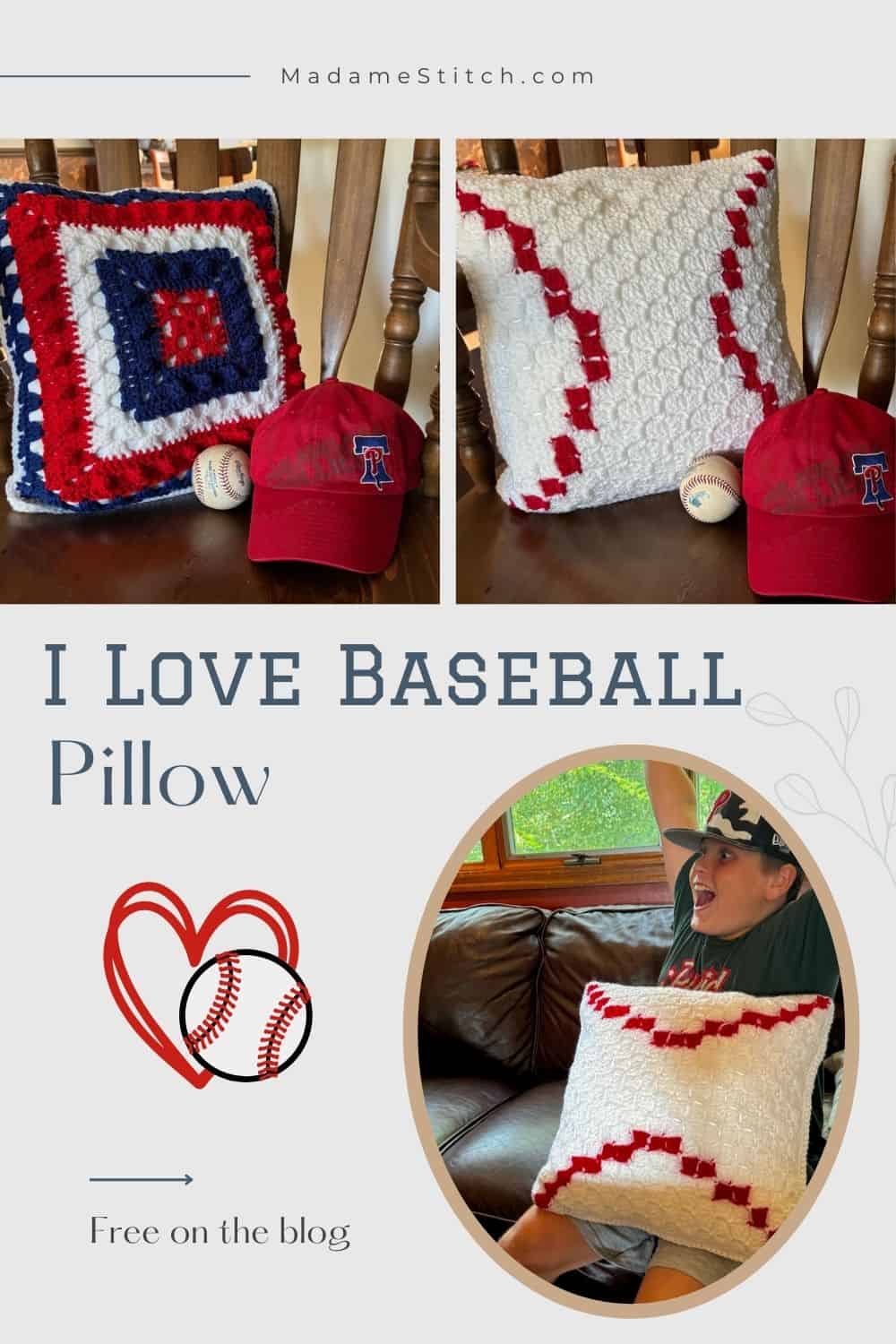
Where to get the PDF for the I Love Baseball Pillow
The I Love Baseball Pillow is a free crochet pillow pattern for blog subscribers in this blog post. Scroll down to view the free version.
However, if you’d like a printer friendly and downloadable version of the PDF, I recommend you purchase it from one of my shops.
The purchased PDF can be uploaded to your favorite mobile device so you can take your crochet pillow project with you to work on whenever you’re out and about.
The PDF is easy to read and beautifully formatted without ads for a great experience. Get your copy today!
The I Love Baseball Pillow Free Pattern
Materials
Yarn
Any worsted weight acrylic in 3 team colors + white and red for the C2C panel
The sample: Philadelphia Phillies team colors
- Color A (CA) – Navy – approx. 70yd
- Color B (CB) – Red – approx. 100yd
- Color C (CC) – White – approx. 210yd
Hook
US size I-9 (5.5mm)
Tools + Materials
- 16″ fiberfill pillow form
- Removable stitch markers
- Tapestry needle for weaving in ends
General Information
Finished Size: 16″ square
Gauge
- Granny square: Rnds 1-3 = 4″
- C2C: Approx. 5 x 5 blocks = 4″
Skill level: Advanced beginner
Abbreviations – US crochet terminology
- beg – beginning
- ch – chain
- dc – double crochet
- rep – repeat
- rnd(s) – round(s)
- sc – single crochet
- sk – skip
- sp – space
- st(s) – stitch(es)
- RS – right side
- WS – wrong side
- YO – yarn over
Special Stitches
Granny stitch (GS) – 3 dc in the same st or sp
Popcorn (PC) – 4 dc in the same st, remove the hook from the working loop, insert the hook from front to back under both loops of the 1st dc worked, slip the working loop back on the hook and pull through the loops of the 1st dc to close the popcorn.
Stacked single crochet (STsc) – (This stitch is used at the beginning of a row or round to replace the traditional turning ch-3. It has the appearance of a dc.) – Insert the hook in the same st as the loop, YO, pull up a loop, YO, pull through 2 loops (bottom sc made), insert the hook in the left vertical bar of the bottom sc, YO, pull up a loop, YO, pull through 2 loops (top sc made).
Pattern Notes
- A ch-1 at the beg of a rnd does not count as a st.
- A ch-2 or ch-3 may be substituted for the STsc at any time without adversely affecting the construction of the square.
- The panels should be 15.5-16” across to fit snugly around the pillow form. The panels will stretch slightly when stitched together. Check gauge during construction to ensure the proper size.
Unlock Exclusive Subscriber Content
To unlock Exclusive Subscriber Content, click on the button in the box below. The Grow.me app window will pop up where you can either create an account or sign in if you already have one.
To create an account, sign in with your existing Google or Facebook account. You can also create an account with an email address and new password.
If you forget your password, simply click the “Forgot my Password”button. I have no access to your Grow account so I’m unable to retrieve or reset your password.
Remember, once you’ve created a Grow account, you never have to do it again. Your Grow account unlocks all the exclusive content created by Grow
Thank you for being a loyal blog subscriber. I hope you enjoy the exclusive content!
Pattern Instructions
Your Baseball Pillow is complete! Time to cheer on your favorite team!

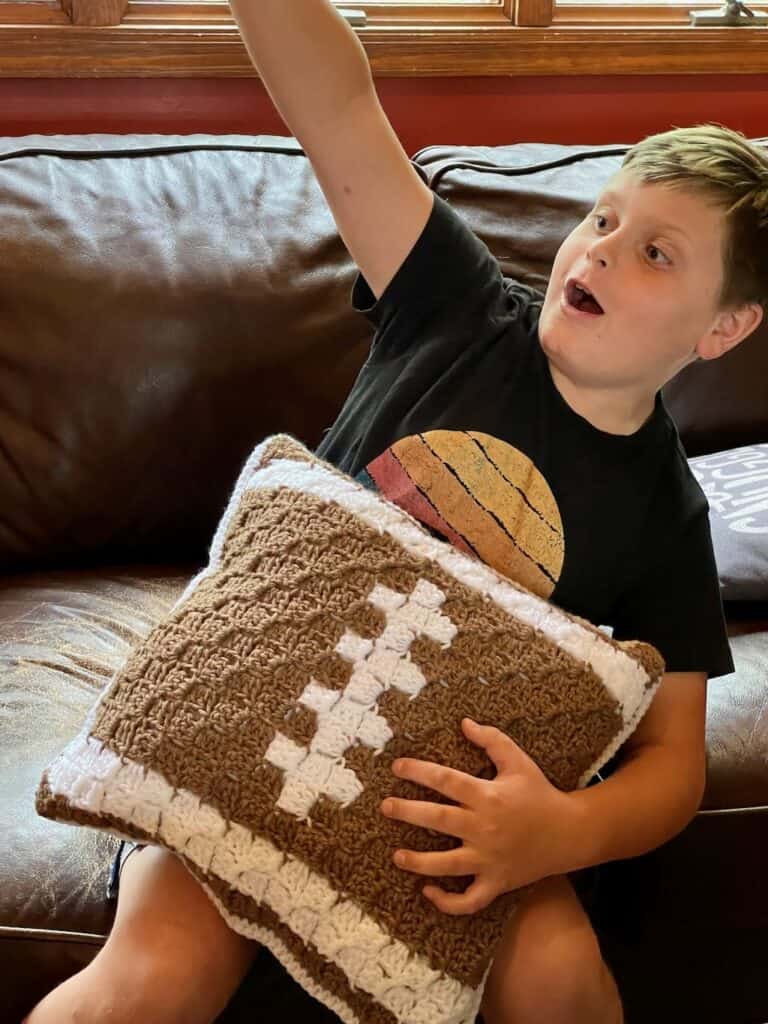



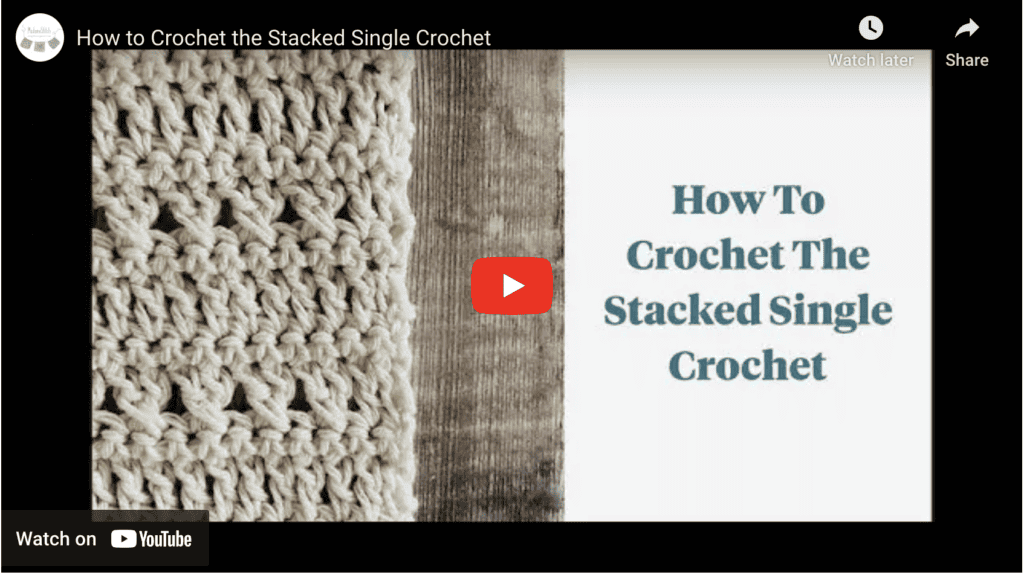
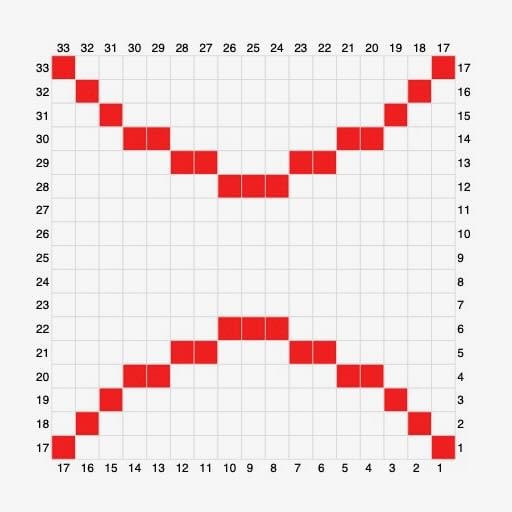

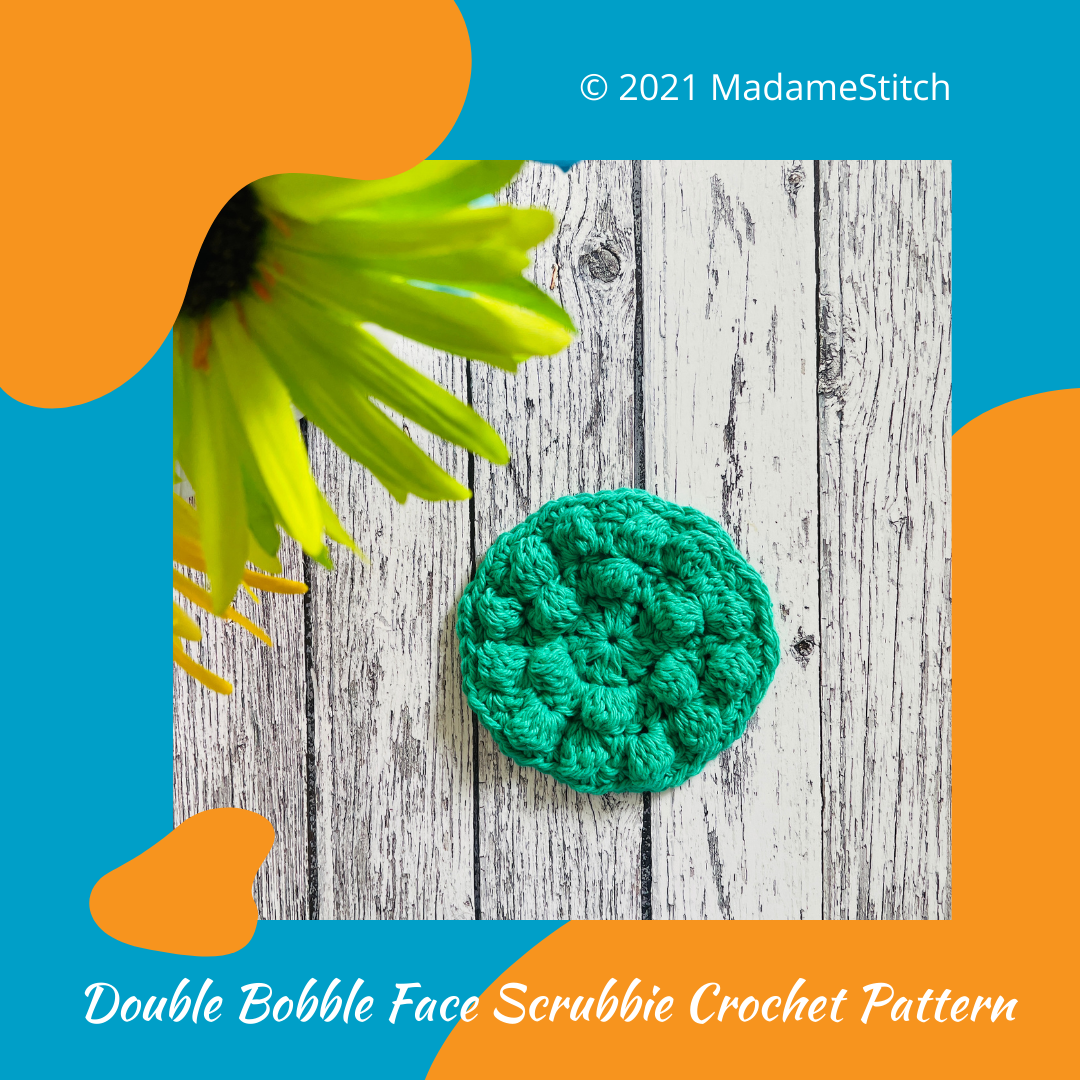
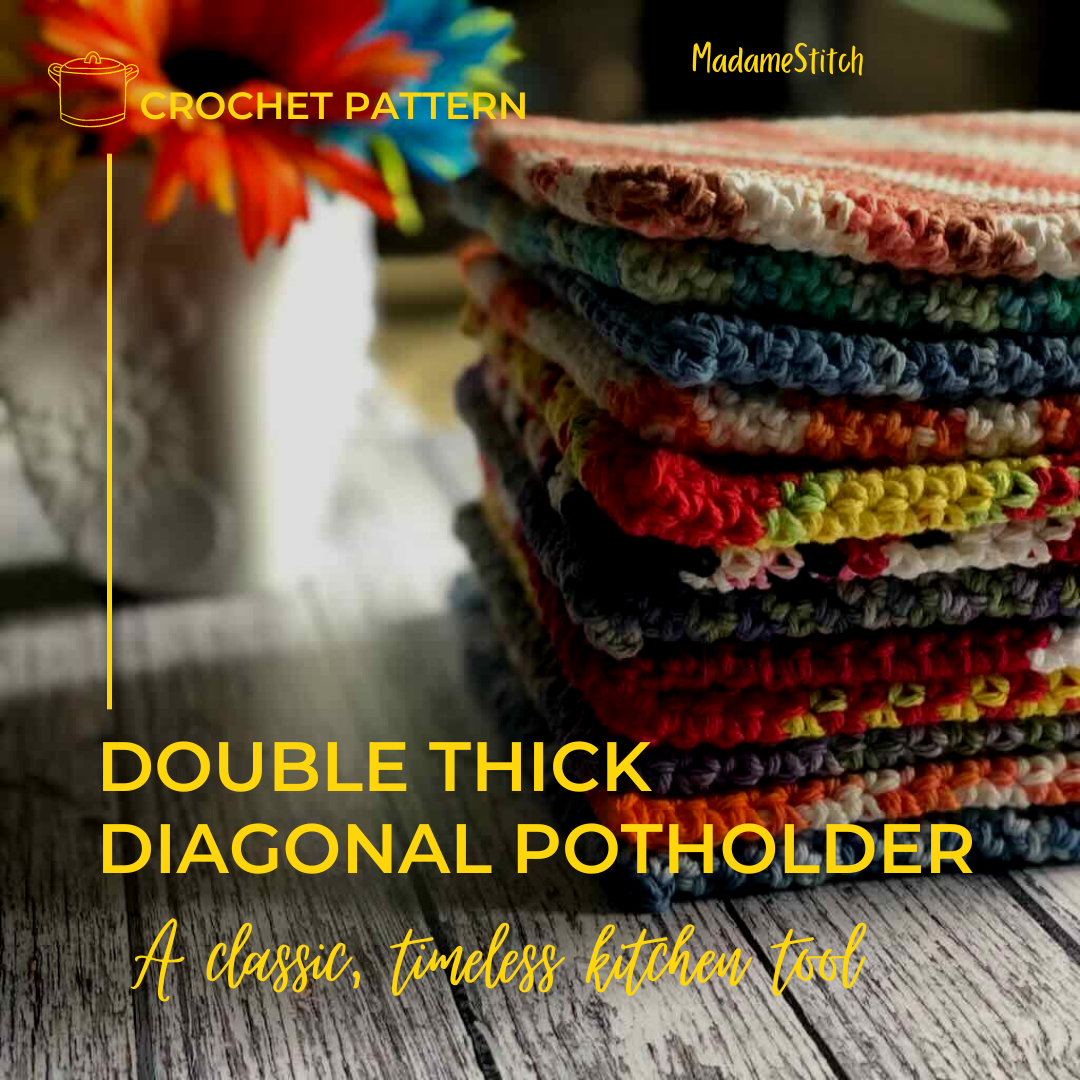
3 Comments